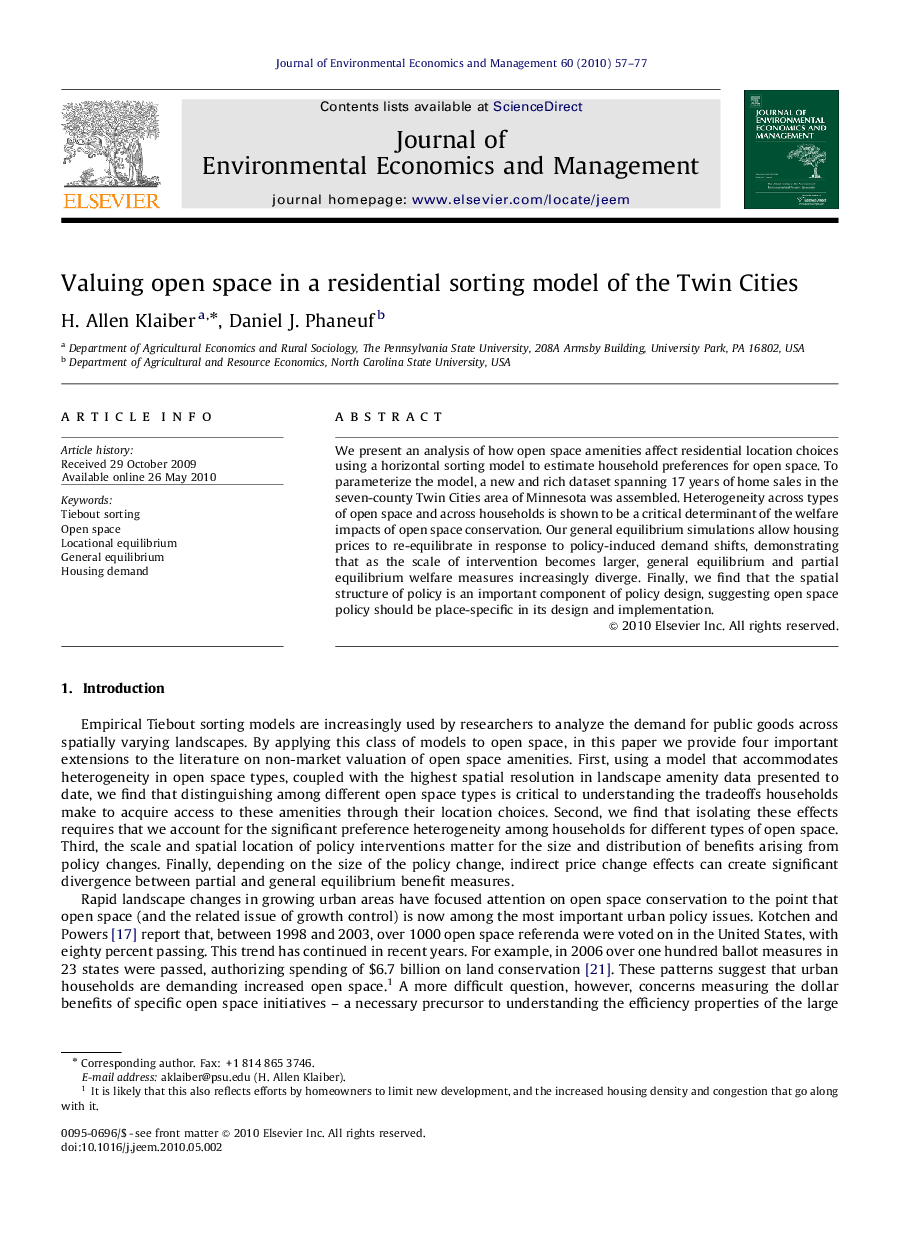| Article ID | Journal | Published Year | Pages | File Type |
|---|---|---|---|---|
| 959290 | Journal of Environmental Economics and Management | 2010 | 21 Pages |
We present an analysis of how open space amenities affect residential location choices using a horizontal sorting model to estimate household preferences for open space. To parameterize the model, a new and rich dataset spanning 17 years of home sales in the seven-county Twin Cities area of Minnesota was assembled. Heterogeneity across types of open space and across households is shown to be a critical determinant of the welfare impacts of open space conservation. Our general equilibrium simulations allow housing prices to re-equilibrate in response to policy-induced demand shifts, demonstrating that as the scale of intervention becomes larger, general equilibrium and partial equilibrium welfare measures increasingly diverge. Finally, we find that the spatial structure of policy is an important component of policy design, suggesting open space policy should be place-specific in its design and implementation.
